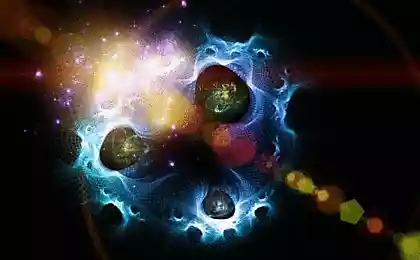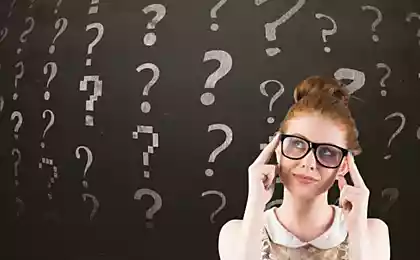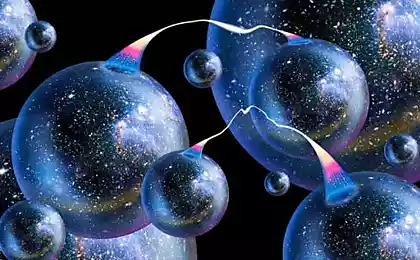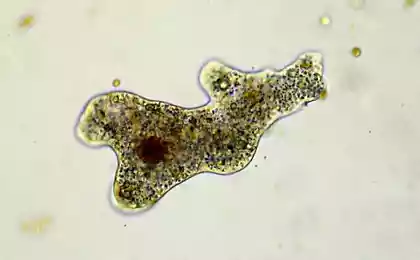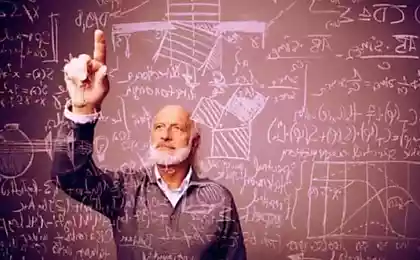1202
7 biggest unsolved mysteries of science.
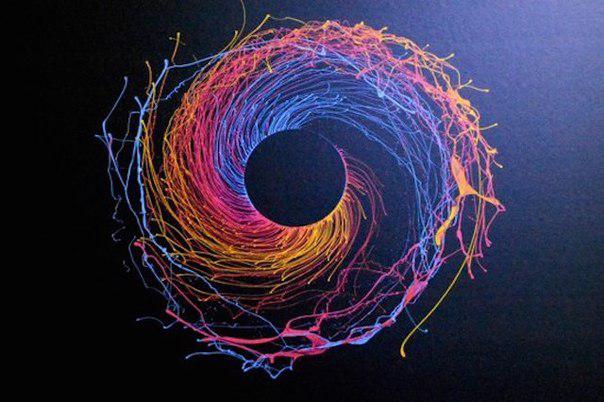
Over the past two centuries, science has answered a lot of questions about the nature and the laws to which it is subject. We were able to explore the galaxies and the atoms that make up matter. We have built a machine that can count and solve problems are beyond the decision by the person. We decided to centuries-old mathematical problems and created a theory that gave new math problems. This article is not about those achievements. This article is about the problems in science, which still forced scientists to look thoughtfully scratching their heads in the hope that one day these questions will lead to cries of "Eureka!».
Turbulence
Turbulence - the word is not new. You know it as a word that describes the sudden shaking during the flight. However, turbulence in fluid mechanics - a completely different matter. Flight turbulence, technically called "clear air turbulence" occurs when two bodies of air moving at different speeds. Physicists, however, difficult to explain this phenomenon of turbulence in fluids. Mathematicians have nightmares about it.
Turbulence in fluids surrounds us everywhere. A stream flowing out of the tap, totally chaotic particle decays into a liquid, other than a single stream that we get when we open the faucet. This is one of the classic examples of turbulence, which is used to explain the phenomenon of pupils and students. Turbulence is common in nature, it can be found in a variety of geophysical and ocean currents. It is also important for the engineers, because they often are born in streams over the turbine blades, flaps and other elements. Turbulence is characterized by the random fluctuations in the variables such as speed and pressure.
While on the subject of turbulence have been many experiments and received a lot of empirical data, we are still far from convincing theory about what causes turbulence in the liquid as it is controlled and that it organizes the chaos. Solving the problem is complicated by the fact that the equations describing the motion of the fluid - Navier-Stokes equations - very difficult to analyze. Scientists have resorted to high-performance computing techniques, along with experiments and theoretical simplifications in the process of studying the phenomenon, but a complete theory of turbulence, no, no. Thus, fluid turbulence remains one of the most important unsolved problems in physics today. Nobel laureate Richard Feynman called it "the most important unsolved problems of classical physics." When a quantum physicist Werner Heisenberg was asked if he appeared before God and had an opportunity to ask him about anything, what would it be, a physicist replied, "I would ask him two questions. Why relativity? And why turbulence? I think the first question he will definitely be the answer ».
Resource Digit.in got a chance to talk to Professor Roddamom Narasimha and this is what he said:
"To date, we are unable to predict the simplest turbulent flows without resorting to experimental data on the stream. For example, it is currently impossible to predict the pressure loss in the pipe with a turbulent flow, but through intelligent use of data obtained in experiments, it becomes known. The main problem is that interest us the problem of turbulent flows are almost always in the highest degree of nonlinearity, and mathematics, which has managed to cope with such an extremely non-linear problems, it seems, does not exist. Among the many physicists had long been common belief that when the topic comes up in their new issue, somehow, as if by magic, necessary for solving math suddenly appears already invented. The problem of turbulence demonstrates the exception to this rule. Laws governing the problem is well known and for simple liquids under pressure is not normally enclosed in the Navier-Stokes equation. But the solutions are unknown. The current math ineffective in solving the problem of turbulence. As Richard Feynman, turbulence remains the greatest unsolved problems of classical physics ».
The importance of studying turbulence has spawned a new generation of computational techniques. The decision, at least approximate, the theory of turbulence will allow science to make better weather forecasts, designing energy-efficient cars and airplanes, and better understand the various natural phenomena.
Origin of Life
We have always been obsessed with the study of the possible existence of life on other planets, but there is one issue that worries scientists over how life appeared on Earth? Although the answer to this question will not bring much practical use, the path to the answer can lead to several interesting discoveries in the fields of microbiology to astrophysics.
Scientists believe that the key to understanding the origin of life can be in the elucidation of the two characteristic features of life - reproduction and genetic transmission - appeared in the form of processes in molecules, which have received the ability to replicate. This led to the formation of the so-called theory of "primordial soup", according to which the young Earth mysteriously appeared mixture, a kind of soup of molecules, which is saturated with the energy of the sun and lightning. For a long time, these molecules should have been combined into more complex organic structures consisting life. This theory has some support in the famous Miller experiment, Uri, when two scientists created an amino acid flowing electric charges through a mixture of simple elements of methane, ammonia, water and hydrogen. However, the discovery of DNA and RNA softened the initial enthusiasm, because it seems impossible that such an elegant structure, as DNA, can develop from a primitive soup of chemicals.
There is a trend which suggests that the world was young rather RNA world than the world of DNA. RNA, as it turned out, has the ability to accelerate the reaction, remaining unchanged, and store genetic material with the ability to reproduce. But to call the original replicator life RNA instead of DNA, scientists have found evidence of elements that could form nucleotides - the building blocks of RNA molecules. The fact that nucleotides extremely difficult to produce, even under laboratory conditions. Primordial soup seems incapable of the product of these molecules. This conclusion led to another school of thought which believes that organic molecules present in primitive life, have an extraterrestrial origin, and were delivered to Earth from outer space on meteorites, which led to the development of the theory of panspermia. Another possible explanation is the theory of "iron-sulfur world", which claims that life on Earth was formed in deep water, came out of the chemical reactions that occur in hot water under high pressure found near hydrothermal vents.
It is noteworthy that even after 200 years of industrialization, we still do not know how on Earth did life. However, interest in this problem is always a good temperature level.
Protein folding
Travel to the palaces of memory will lead us to a school chemistry or physics lessons that we all loved so much (well, almost all), where we explained that proteins - are extremely important molecules and building blocks of life. Protein molecules composed of amino acid sequences which affect the structure and, in turn, determine the specific activity of the protein. The way in which the protein is placed and takes the unique native spatial structure is an old mystery in science. Science Magazine once called protein folding one of the major unsolved problems of science. The problem is, in essence, consists of three parts: 1) how the protein evolves into its final native structure? 2) Can we bring computational algorithm to predict the protein structure of the sequence of its amino acids? 3) Given the large number of possible conformations, the protein is placed so quickly? Over the past few decades on all three fronts has been done considerable progress, however, scientists still do not fully deciphered the mechanisms leading and hidden principles protein folding.
The folding process involves a large number of forces and interactions that allows the protein to attain the state of the lowest possible energy that gives it stability. Because of the high complexity and large number of fields of force involved, it is difficult to understand the exact physics of the process of protein folding small. The problem of trying to solve the structure prediction in combination with physics and powerful computers. Although a small and relatively simple proteins has been some success, scientists are still trying to accurately predict the folded form of complex multidomain proteins in their amino acid sequence.
To understand the process, imagine that you are at the crossroads of thousands of roads that lead in the same direction, and you need to choose a path that will lead you to your destination in the shortest time. Exactly the same, only larger problem lies in the kinetic mechanism of protein folding in a particular state possible. It has been found that the random thermal motion of playing a major role in the rapid nature of the folding of the protein and that "flies" through the conformation locally, avoiding the unfavorable structure, but the physical path is open to question - and its solution can lead to more rapid protein structure prediction algorithms. < br />
The problem of protein folding remains a hot topic in the biochemical and biophysical studies of modernity. Physics and computational algorithms developed for protein folding, led to the development of new synthetic polymer materials. In addition to contributing to the growth of scientific computing, the problem has led to a better understanding of diseases such as type II diabetes, Alzheimer's, Parkinson's and Huntington's - in these disorders incorrect folding of proteins plays an important role. A better understanding of the physics of protein folding can not only lead to breakthroughs in materials science and biology, but also a revolution in medicine.
The quantum theory of gravity
Science
We all know about the apple that fell on Newton's head and led to the discovery of gravity. To say that after the world has ceased to be the same - to say nothing. Then came Albert Einstein with his theory of general relativity. He again looked at the gravity and the curvature of space-time fabric that makes up the universe. Imagine a heavy ball lying on a bed, and a small ball, which is nearby. Heavy pressure on the ball of the sheet, bending it, and a small ball rolls toward the first ball. Einstein's theory of gravity is working smartly and even explains the curvature of light. However, when it comes to sub-atomic particles which work is due to the laws of quantum mechanics, general relativity gives a rather strange results. The development of the theory of gravity, which can unite quantum mechanics and relativity theory, the two most successful theories of the 20th century, is the largest scientific research tasks.
This problem has spawned a new and interesting field in physics and mathematics. The most attention was attracted by the so-called string theory. String theory replaces the concept of tiny vibrating strings of particles, which can take many forms. Each string can vibrate in a certain way, which gives it a definite mass and spin. String theory is incredibly complex and mathematically arranged in ten dimensions of space-time - six more than we used to think. This theory successfully explains a lot of strange marriage of gravity with quantum mechanics, and at one time was a candidate for the stable "theory of everything».
Another theory, formulating quantum gravity, called loop quantum gravity. PKG relatively less ambitious and tries to be, above all, self-theory of gravitation is not preparing to strike at the grand unification. SL is the space-time as a fabric formed by tiny loops, hence the name. Unlike string theory, SL adds extra dimensions.
Although both theories have their pros and cons, the theory of quantum gravity, remains an open question, since none of the theories has been proved experimentally. Experimental verification and confirmation of any of the above theory is a gigantic problem of experimental physics.
The theory of quantum gravity is hardly noticeable effect take on a momentum in our daily life, however, being discovered and proven, it will be a powerful indication that we are well advanced in science and can move in the direction of the physics of black holes, time travel and wormholes.
The Riemann Hypothesis
In an interview with the famous number theorist Terence Tao called primes atomic elements of the theory of numbers, quite compelling characteristics. There are only two primes divider 1 and the number itself, and thus they are the simplest element numbers in the world. Primes are also extremely unstable and does not fit into the patterns. Large numbers (the product of two prime numbers) is used to encrypt million secure online transactions. A simple factorization of such a number would take an eternity. However, if we somehow grasp random at first sight, the nature of prime numbers and better understand their work, we get closer to something great and literally hacked Internet. The solution of the Riemann hypothesis may lead us ten steps closer to understanding primes and will have serious consequences in the banking, commercial and security structures.
As already mentioned, the prime numbers are known for their challenging behavior. In 1859, Bernhard Riemann found that the number of primes not exceeding x, - function of the distribution of primes, denoted by pi (x) - expressed in terms of the distribution of the so-called "non-trivial zeros" zeta function. Solution Riemann associated with the zeta-associated distribution function and the points on the line of integers for which the function is 0. The hypothesis associated with a particular set of these pixels, "trivial zeros" which are believed to lie on the critical link: all nontrivial zero zeta function have a real part equal to ½. This hypothesis is confirmed more than a billion of zeros and can reveal the secret enveloping the distribution of prime numbers.
Every mathematician knows that the Riemann hypothesis is one of the biggest mysteries unanswered. Its solution will not only affect the science and society, but also guarantees the author solutions prize of one million dollars. This is one of the seven great mysteries of the millennium. Attempts to prove the Riemann hypothesis were a great many, but they were unsuccessful.
Coping mechanisms tardigrades
Tardigrades - a class of microorganisms, which are quite common in nature, in all climates and at all altitudes our seven continents. But this is no ordinary microorganisms: they have extraordinary ability to survive. Take, for what is the first living organisms that can survive a dangerous vacuum of space. Few tardigrades went into orbit a rocket "Foton-M3", were exposed to all kinds of space radiation and returned almost unscathed.
These organisms are not only able to survive in space, but also can withstand a temperature just above absolute zero, and the boiling water. They also quietly tolerate the pressure of the Mariana Trench, 11-kilometer crack in the Pacific Ocean.
Studies reduce some incredible abilities to cryptobiosis tardigrades, anhydrobiosis (drying) - a condition in which the metabolic activity slows down enormously. Drying allows essentially lose water and virtually stop metabolism. With access to water, Tardigrada restores its original state, and continues to live as if nothing happened. This ability helps it to survive in the desert and drought, but this "little water bear" manages to survive in space, or in extreme temperatures?


